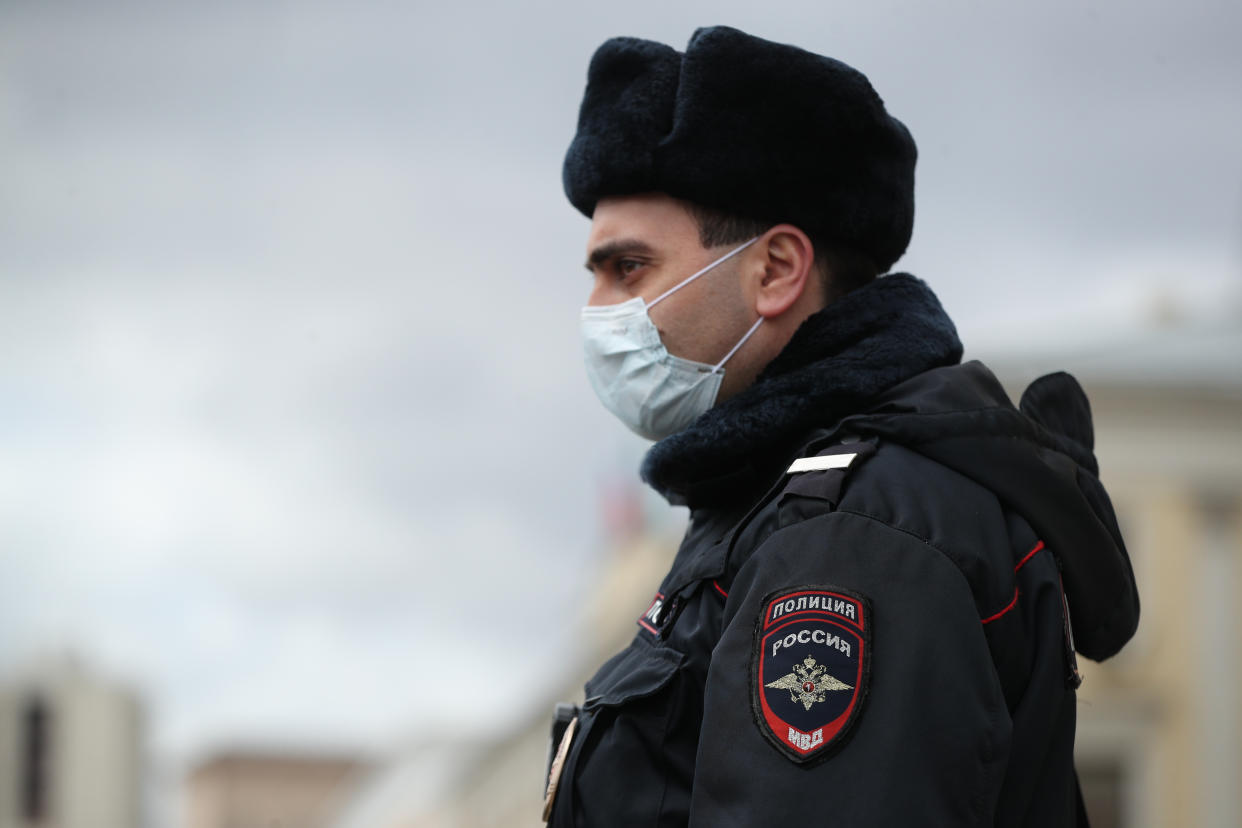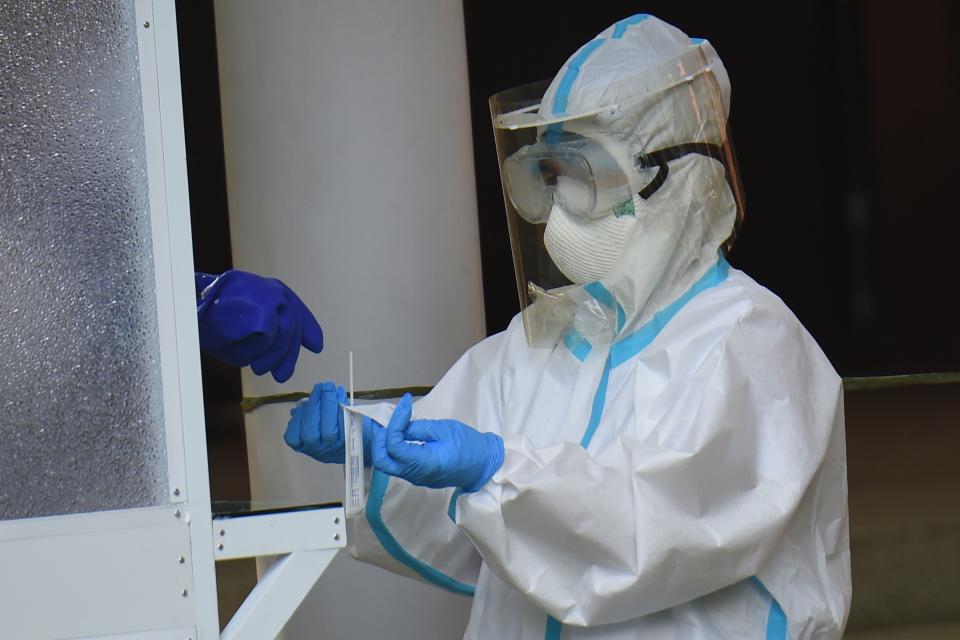Coronavirus: On and off social distancing may last until 2022, Harvard scientists say

Social distancing may have to continue on and off until 2022, Harvard scientists have predicted.
The UK, like much of the world, is in “lockdown”. Boris Johnson has introduced draconian measures that only allow Britons to leave their home for “very limited purposes”, like shopping for essentials.
The situation is similar in the US, where every state has imposed some form of restriction.
To predict how the new coronavirus outbreak may play out, the Harvard scientists created models based on two other strains of the same virus class.
They found the coronavirus will “probably” become a seasonal infection that re-emerges every winter in the northern hemisphere, like flu.
In the absence of a vaccine or effective treatment, “prolonged or intermittent social distancing may be necessary into 2022” to prevent “critical care capacities [being] exceeded”.
Experts welcomed the “excellent” research, with one stressing the results should be taken “very seriously”.
Early research suggests the coronavirus is mild in four out of five cases; however, it can trigger a respiratory disease called COVID-19.

Coronavirus: Social distancing may be in place 25% to 75% of the time
The new coronavirus is one of seven strains of a virus class that are known to infect humans.
Others include severe acute respiratory syndrome (Sars), which killed 774 people during its 2002/3 outbreak, but has had no reported cases since 2004.
Latest coronavirus news, updates and advice
Live: Follow all the latest updates from the UK and around the world
Fact-checker: The number of COVID-19 cases in your local area
Explained: Symptoms, latest advice and how it compares to the flu
The new coronavirus is more genetically similar to Sars than any other strain of that class, but scientists do not expect it to be eradicated after this one intense outbreak.
“Sars couldn’t become seasonal because it’s transmission only really after symptoms became apparent meant we were able to contain and eradicate it,” Dr Michael Skinner from Imperial College London previously told Yahoo UK.
“With [the new coronavirus], there’s little confidence we’ll be able to put it back into a stoppered bottle [like Sars] until we have a vaccine.”
Four other strains of the coronavirus class are seasonal infections and cause a common cold.
The Harvard scientists looked at two of these strains to model whether the new coronavirus may become seasonal and how long immunity against it could last.
Pharmaceutical companies and universities all over the world are racing to develop a vaccine.
The Harvard team stress, however, jabs can take “months to years to develop and test, leaving non-pharmaceutical interventions the only immediate means of curbing transmission”.
Based on this, the scientists predicted some form of social distancing may have to be in place between 25% and 75% of the time until 2022.
“Intermittent distancing may be required into 2022 unless critical care capacity is increased substantially, or a treatment or vaccine becomes available,” they wrote in the journal Science.
Assuming the new coronavirus becomes seasonal, these restrictions could be relaxed in the northern hemisphere’s summer.
“As the pandemic declines, one possible outcome is the numbers of cases will drop sufficiently so the disease will be eradicated”, said Professor Rowland Kao from the University of Edinburgh.
“If not, then there is a possibility enough cases will occur through the summer months so that COVID-19 will return, with sufficient cases to place a severe burden on intensive care units.”
Lockdowns may also be waned as more people catch the infection over time, contributing to herd immunity.
The Harvard scientists acknowledge social distancing can have “profoundly negative economic, social and educational consequences”.
“Our goal in modelling such policies is not to endorse them, but to identify likely trajectories of the epidemic under alternative approaches,” they wrote.
The team warn, however, that the impact of the virus on healthcare systems could be “catastrophic” if social distancing proves ineffective.
Professor Gordon Dougan from the University of Cambridge agreed, adding: “In reality, the balance between the health issues and economic challenges will be an important consideration, and we mustn’t forget social distancing to avoid transmission of this virus is challenging.”

Coronavirus: ‘Only long-term solution is a vaccine’
Experts have welcomed the research, despite it being based on models.
“Much of this is common sense based around how we know epidemics oscillate,” said Professor Dougan.
“Having said that, there are so many variables around COVID-19 that these are intelligent and calculated estimates.
“I am not sure comparing with other coronaviruses is helpful as [the new coronavirus] is much more pathogenic and invasive. However, overall there is little to compare [it] with.”
Several experts stressed the importance of a vaccine.
“This is an excellent paper by a very good group at Harvard; the results should be taken very seriously,” said Professor Sir Roy Anderson from Imperial College London.
“There is only one ‘longer term’ solution and that is a vaccine – the mitigation effects are all ‘suck it and see’.
“All governments should be thinking how they encourage all of the big pharma vaccine companies to produce a product that works and then the difficult bit, manufacturing on a huge scale.”
Professor Dougan agreed on the importance of immunisation, adding: “I think it is likely some [restrictive] measures will still be in place if we do not have good and freely available vaccines.”
Professor Kao described the research as “important speculations”.
“However, as a prediction of the future, it depends on being able to disentangle the combined effects of three factors (herd immunity, social distancing and seasonality) all of which are occurring simultaneously,” he said.
“As this is an extremely difficult task, its predictive power should be viewed with caution, despite the excellence of the work itself.”
Professor Mark Woolhouse from the University of Edinburgh agreed. Despite calling the study “excellent”, he said “it is important to recognise it is a model”.
He also noted that the research did not look at the impact of specific social distancing measures, like shutting schools, working from home and avoiding travel.

What is the coronavirus?
Since the coronavirus outbreak was identified, more than 1.9 million cases have been confirmed worldwide, according to Johns Hopkins University.
Of these cases, over 494,900 are known to have “recovered”.
Globally, the death toll has exceeded 126,800.
The coronavirus mainly spreads face-to-face via infected droplets expelled in a cough or sneeze.
There is also evidence it may be transmitted in faeces and can survive on surfaces.
Most cases are mild, however, pneumonia can come about if the coronavirus spreads to the air sacs in the lungs.
This causes them to become inflamed and filled with fluid or pus.
The lungs then struggle to draw in air, resulting in reduced oxygen in the bloodstream and a build-up of carbon dioxide.
The coronavirus has no “set” treatment, with most patients naturally fighting off the infection.
Those requiring hospitalisation are given “supportive care”, like ventilation, while their immune system gets to work.
Officials urge people ward off the coronavirus by washing their hands regularly and maintaining social distancing.




